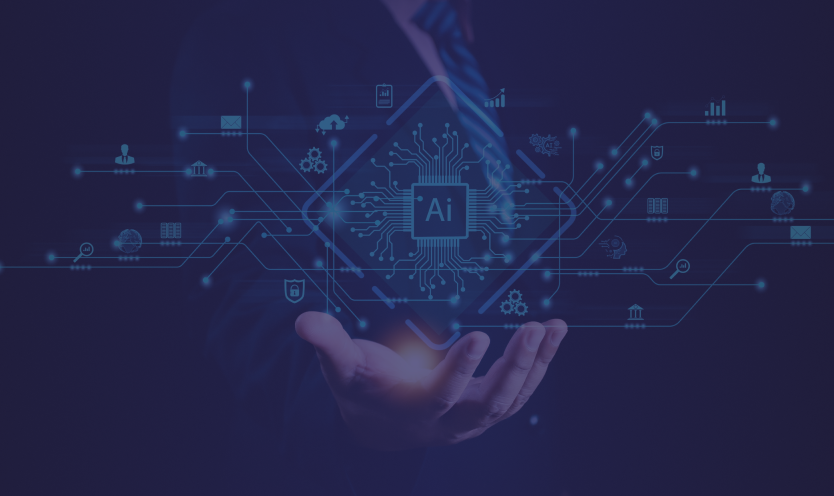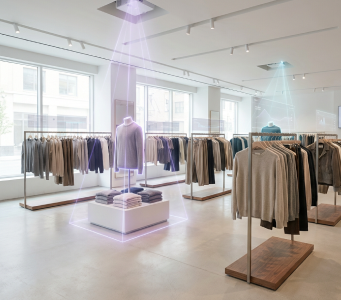Talking Tech Strategy for Retail Post-COVID
Talking Tech Strategy for Retail Post-COVID
With many questions still unanswered six months after the start of the pandemic, scenarios for retail post-COVID are hardly in short supply, even if some consumer goods remain scarce.
There’s plenty of speculation out there about what the “new normal” will look like, based mostly on observations from the past six months: Thousands of closed stores and restaurants. An intensifying consumer shift toward digital shopping. Shopping mall anchors repurposed into fulfillment centers. Automated fulfilment. Curbside pickup. AI-powered tools for personalized pricing. Contactless payments. Delivery robots.
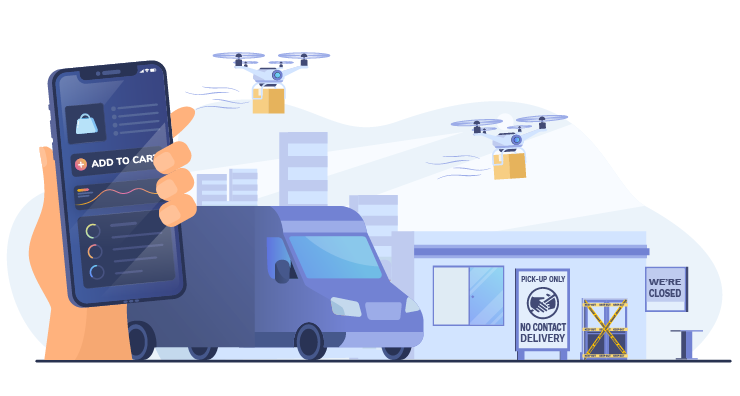
Certainly, there is no going back to the “old normal.” Some or all of these profound changes in business practice are likely to become core features of the next several years in retailing. They will define the character of shopper experience and create a new pantheon of business legends. How will visionary leaders tackle the strategic technology choices that will ensure their success in retail post-COVID?
We sat for a thoughtful interview with Todd Michaud, President and Chief Customer Officer of Hypersonix, for a glimpse into the near future of retail and retail tech strategy.
“Now is the time to do hard things,” he said. After a career leading several retail technologies companies that provided the industry with solutions for merchandising, marketing, supply chain and shopper engagement software, he knows from where he speaks.
Michaud maintains that despite the appearance of chaos in retailing today, it is in fact an opportune moment for companies in the extended retail industry to do the hard things, in fact the things that they should have done long ago, that will position them for future greatness.
Passivity is not an option, he says. Strategic actions taken now will enable them to stand apart from retailers that are less intrepid, less bold, less forward thinking. There are many known unknowns ahead, for the retail economy and consumers, but the outlook is promising.
Q. What do you mean when you advise retail leaders, “now is the time to do hard things”?
Michaud: Let’s start with where we have been. We’ve come through a process over the last several years where the economy had been humming. Objectively, it was on a solid growth track right up until February of this year, and even the stock market and unemployment rate reflected that.
Despite the great economy everything wasn’t rosy. In some retail verticals we have heard about the over-abundance of physical store locations. People had been using the term, “retail apocalypse” to describe the spate of closures of some retail stores and chains over the prior two years.
It was a tough time for many retailers, as shoppers on their own timetables were making a transition to digital, mobile, and other new forms of engagement with their favorite retailers. The hardest part, as always, was managing changes.
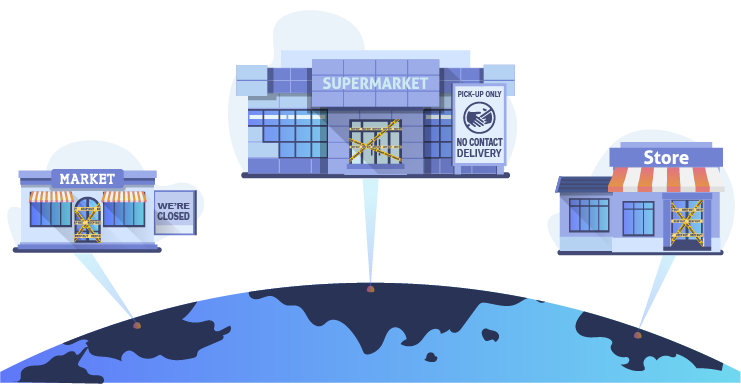
We saw a lot of growth occurring over the past few years in digital channels and we also saw shrinkage in some store-based brick and mortar channels, specifically around certain categories of retail products.
So that challenging environment was going on before. And then, COVID hit.
Q. At the risk of restating the obvious, what do you believe were the most important consequences?
Michaud: It had a paralyzing effect. You couldn’t go visit your favorite retailers even if you wanted to. Malls were closed. Stores were closed. People were social distancing.
We found ourselves in a situation where shoppers, or consumers, were in some cases for the first time, exploring digital engagement. Other more experienced digital shoppers began expanding their experiences around ecommerce engagement.
This caught a great many retailers flat-footed. They had inventory in the stores, but shoppers were not visiting the stores. Or, if they sold grocery products, they had to grapple with panic demand that threw a wrench in their operations. Regardless of the type of retail, many weren’t particularly well set up from an ecommerce channel perspective, for either curbside or home delivery.
While the economy is starting to open up very slowly and we remain in this COVID era, we are finding that there are changed consumer patterns and behaviors. Last year’s forecasts for new digital engagement have been doubled or more in some instances.
Many people are still social distancing. We are still seeing increasing preference for digital engagement where that makes sense. It’s not surprising, really.
Whether you are a brick and mortar retailer, a multichannel retailer, or an ecommerce retailer, the fact of the matter is the expectations of your shoppers are changing. You need to be positioned for how they want to shop in the future, rather than how they historically have shopped in the past.
Q. It has been six months. How do you visualize the next chapter?
Michaud: Inevitably we are going to see malls will reopen and other stores will also reopen. The questions on everybody’s mind are: Will shoppers’ patterns have changed forever? Or will they revert back? Is there still as much of a need to touch and feel merchandise? Is there a need to be entertained by our retail experience once again? Will everybody go back to the old normal, or will some portion of shopper behavior be changed forever?
The speculation of course is that some portion of shopper behavior will return to past norms. But another, probably larger, portion will have been changed forever.
Q. So what does that really mean for retailers in practical terms?
Michaud: Many of them have systems – real estate, inventory, supply chain, others – that might have been built for pre-COVID era. This was likely true regardless of how you may have been responding to the retail apocalypse concerns of 2018-19. Your technology was your technology. Technology change when it happened, was controlled, cautionary, and evolutionary.
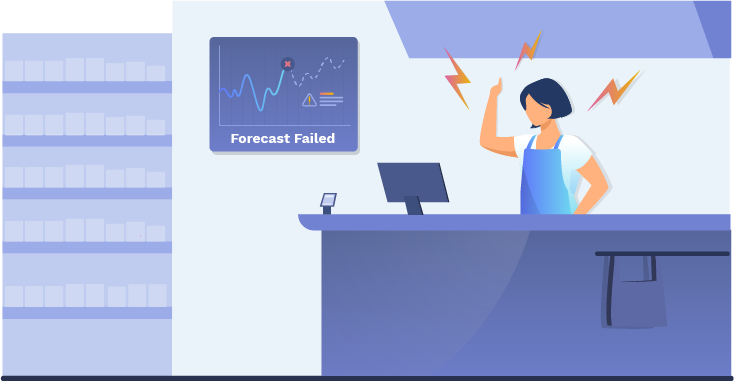
Now suddenly the question is, are these still the right tools to transform your business into the business you need to be in the future to attain your fair share of shopper wallet? Old techniques, old processes, old systems may not be the best place to be.
Now doesn’t it make sense right now to do some serious soul searching? To make some tough decisions? To do the hard things now, while you are still operating in a slowed-down mode due to the pandemic? Shouldn’t you address the legacy systems and processes now, versus being forced to do it at some point in the future when the economy re-starts and comes roaring back? Inevitably, when the economy rebounds, the excuse will be “we’re too busy” to consider doing it now.
My premise is that now is the very best time. When you determine that what you are doing now isn’t going to be as effective going forward, be decisive. In our view, it makes the most sense to take action at the soonest possible moment to make foundational changes.
Q. What about the counter-argument that with revenues lower now retailers should wait to make these investments?
Michaud: I understand that perspective. We think: We’re hurting now. Revenues are low. Shoppers aren’t visiting. Shouldn’t I kick the can down the road a bit until they return and things are better? That’s a legitimate question to ask.
At this point, however, if you recognize that you don’t have the right systems in place, you do need to make a transformational change. The question is merely when will you address it. Now or in the future?
Our point of view is that now is the ideal time to tackle these hard things. This brings you to some very fundamental questions.
Do you plan to be in business next year or two years from now? Most retailers would of course say, absolutely.
Do you agree that what you’re doing now may not be the ideal approach for the future? Most retailers would say, yeah, we’re going to have to make some big transformational changes to support the digital channels. Recent experience is already showing us that we will need to increase the pace of our decisions and responses to market discontinuity.
Q. Are these changes just about meeting changes in shopper demand? What about meeting competitive challenges?
Michaud: At their root, the need is to better support data-driven decision-making. To be more in tune with the demand patterns of our shoppers in the future. That includes the expectations they have around pricing, promotional offers, assortment choices that they expect to be able to get from us. Around the inventory availability – do they want the instant gratification to be able to leave the store with a product when they visit your physical store versus buying something online.

It is also true that your competition is adjusting to these changes. This is the point. And you also need to run a tighter ship. Maybe you had a labor-intensive model and you need to be operating in a more cost-conscious way.
So, you have all these factors figuring into your technology strategy: Changing shopper expectations. The actions of dynamic competitors. Figuring your responses to macro-level changes that could influence your business. The many challenges of running a tight ship within your own retail environment.
Q. For retail post-COVID, won’t a rebounding economy make tech decisions easier to face?
Michaud: A lot of economists are debating the point about when will the economy recover and kick into high gear? The only question between them seems to be not “if” but simply “how soon and how strong?”
I have seen some forecasters say that 2021 could be one of the fastest growth periods over the past several decades in our country, like a spring that uncoils after the self-sacrifices are over.
If that’s the case, let’s project forward. What if we wait to do the hard things until then? The question really becomes, Will we have the time [bandwidth] in a robust growth 2021 to really get to the things that we should have done now to better empower our leaders and decision-makers? Or will we just say no, can’t do it. I’m too busy. Got too many competing priorities?
In all of human history, including 2020 and 2021, people are never less busy in the future than they are today. It’s impossible. We imagine we’re going to be less busy when business gets better, but never are. And we’re certainly not going to be less busy in a robust growth year.
So, you have got to step up to do the foundational things. Improve the decision-making, intelligence systems that you use to operate your business every day. Put a new compass in place for the business of the future. Prepare your organization for rapid growth in a robust recovery. Or if you are more pessimistic about growth prospects, prepare for a nimble, tighter ship that is more shopper-responsive than ever.
That’s why I say kicking the can down the road is not the best alternative. It takes a bit of time to transform your business with, for example, AI-powered analytics. It takes effort. There’s a learning curve, but dividends will follow.
Q. How important will it be for retailers to adopt AI to be more rapidly responsive to a pace of change that’s likely to accelerate?
Michaud: There are so many initiatives, large and small, that we will have on our plates going forward. A key question is which of those agenda items can we retire now that best set us up for profitable revenue growth? For delighting shoppers? For out-hustling competition?
It’s crystal clear that many of the systems that you are using to manage your retail enterprise need to change. Now more than ever, artificial intelligence is relevant to that business transformation. It should be perhaps at the top of retailers’ priority lists.
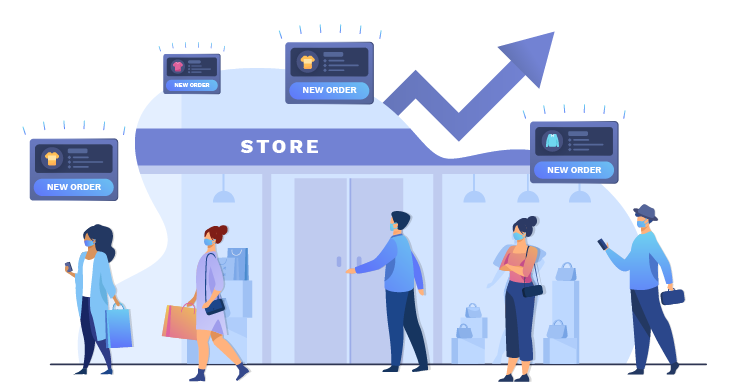
I advocate that retailers put a system of business intelligence in place that makes you future ready. This will empower other important priorities, including some that take much longer to implement.
By comparison, operational systems are hardest to change and they take the longest. For example, replacing your POS, your supply chain system, your ERP if you have one. The prize may come after a long, arduous journey to a point well in the future.
Think about artificial intelligence and the advantages it will bring you in terms of time to value. The ability to leverage the technology to enable next-gen decision making. Being able to stand up an AI solution in a couple of months can deliver accelerated financial benefits. It’s a quick win that will bring meaningful impact in the shorter term. It is something you can get done in advance of or concurrent with the economic recovery.
Q. This is a challenging strategic conversation for a challenging time. Should retailers be worried?
Michaud: On the contrary. We’ve endured a great deal this year, but I foresee a bright, robust future. The ongoing strength of the investment markets is just one positive sign about their outlook. Once COVID treatments and vaccines reach global markets, the economy is likely to surge back, full employment will return and consumers will be unleashed. Shopping behaviors may be different in some lasting ways, but they certainly will be vigorous.
Much of the damage has already been absorbed, so retailers will emerge wiser, tougher, and better-equipped to make smart, timely business decisions going forward next year and beyond.
Retailers should ask themselves two key questions while they are considering their next move:
Were you pandemic-ready? The record shows that very few were.
Will you be recovery-ready? Some will make the choice to maximize, capitalize, move ahead of competitors, and seize control of the next phase.
There are a few things a retailer can do to really move the needle. One right now is to invest in artificial intelligence, to make better, faster decisions. Respond with greater assurance to market changes to stay ahead of them.
Q. Any final words about technology investment strategies?
Michaud: The systems that we have relied upon for years were backward-looking, legacy in some cases. The solutions that we need now, to maximize opportunity around current market changes, are fundamentally different.
There are lots of things that you could change. You are likely to tackle several of them over time. I believe the wisest choice is to focus on the solutions that deliver the highest impact – some would say the lowest-hanging fruit. Advanced AI for smarter decision making fits the bill, as a fast win that brings benefits quickly and positions the entire enterprise for a stronger, more competitive future.
Do it first. Do it now. You never get less busy.
Hypersonix is a next generation AI-driven Decision-Making Platform delivering real-time intelligence and recommendations. From manufacturers and distributors to in-store and ecommerce retailers, Hypersonix enables profitable revenue growth. Through a “Google-like” search and autonomous intelligence applications, Hypersonix enables retailers to stay ahead in today’s dynamic market.


